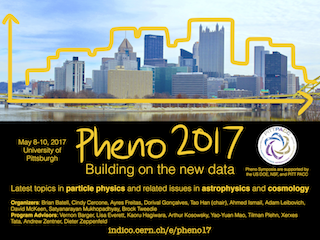Speaker
Description
We critically examine the classic endpoint method for particle mass determination, focusing on di?fficult corners of parameter space, where some of the measurements are not independent, while others are adversely a?ected by the experimental resolution.In such scenarios, mass di?erences can be measured relatively well, but the overall mass scale remains poorly constrained. Using the example of a standard SUSY decay chain we demonstrate that sensitivity to the remaining mass scale parameter can be recovered by measuring the two-dimensional kinematical boundary in the relevant three-dimensional phase space of invariant masses squared. We develop an algorithm for detecting this boundary, which uses the geometric properties of the Voronoi tessellation of the data, and in particular, the relative standard deviation (RSD) of the volumes of the neighbors for each Voronoi cell in the tessellation. We propose a new observable, which is the average RSD per unit area, calculated over the hypothesized boundary. We show that the location of the ??function maximum correlates very well with the true values of the new particle masses. Our approach represents the natural extension of the one-dimensional kinematic endpoint method to the relevant three dimensions of invariant mass phase space.
